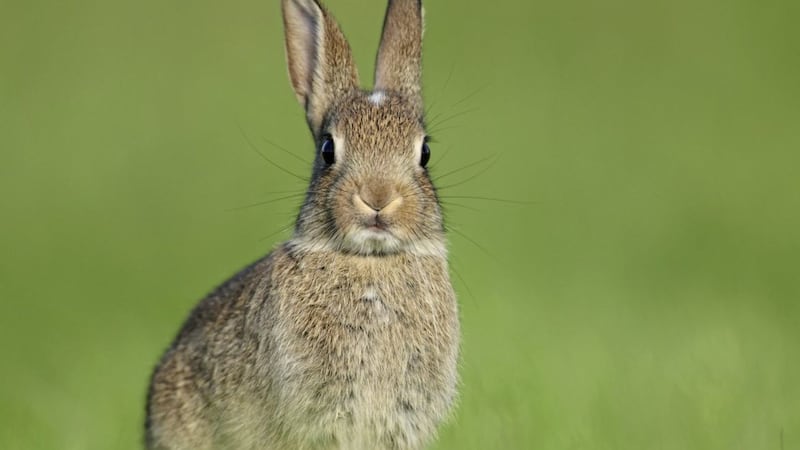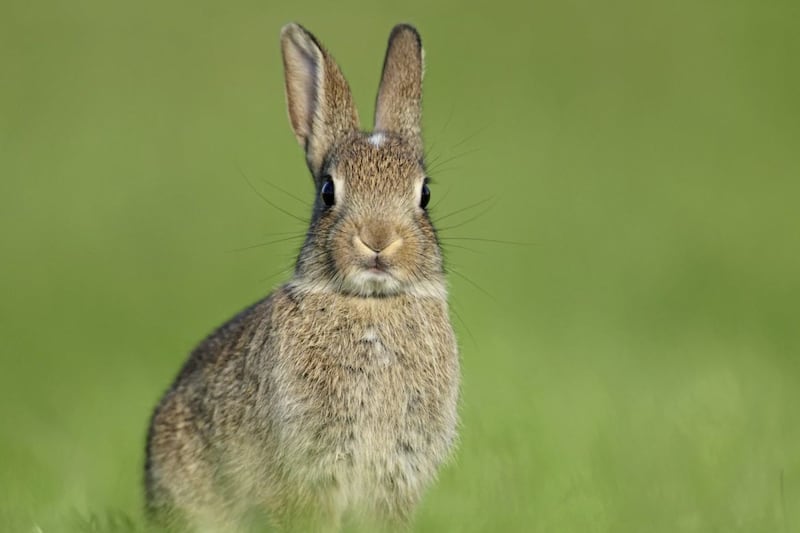I AM amazed at my dog Robbie’s indifference to rabbits. I expected he would relish chasing them in the same way he locks on to the scent of a rat, but he simply gives them a derisory look before moving on to more interesting smells.
Oryctolagus cuniculus, the European or common rabbit, is probably Ireland’s most familiar wild mammal. Adults are about 35cm long, with fur colour ranging from grey-brown to a sandy yellow above, with a white belly.
Their Latin name cuniculus, meaning ‘underground passage’, points to their burrow systems or warrens. Highly adaptable, they are found wherever ground is suitable for burrowing, preferring areas of loose, free-draining soil with suitable above-ground cover. Favoured habitats include pastures close to hedgerows and sand dunes.
The first historical reference to the European rabbit was by Greek historian, Polybius in the second century BC, when writing about Corsica. Harry Thompson in 1956 writes, "It was also a serious pest in the Balearic Islands at this period and was well known in Spain.’’
Through human hands the rabbit now inhabits most of Europe and many other parts of the world. Introduced to Ireland by the Normans in the 12th century as a source of food, skin and fur, rabbits became serious pests because of their intensive grazing. The earliest reference to rabbits here is found in a written deed from 1185 which reads, "John, son of the King of England granted Alard, son of William, near Waterford, the land of Carreckenard. He also granted him the hunting of stag, dog, pig, hare, wolf and rabbit.’’ (Ormond deeds 1172-1350).
The Normans used rabbit gardens, ‘coney garths’, a corruption of ‘coney’ and ‘earth’, or warrens, systems of enclosed fields to keep predators out and rabbits in, but escape was inevitable and the mammal soon quickly spread to other counties.
The adult was traditionally known as a coney, with ‘rabbit’ only used for the young. Coinín, Irish for rabbit, is a word found regularly in Irish place names, appearing in terminations like coneen or nagoneen, as in Knocknagoney in east Belfast, the hill of the rabbits.
There are also townlands with names suggesting the presence of a warren like Conywarren, Co Tyrone or Kinnegar, close to the shore in Holywood.
An important food source at home, rabbits also became an important export industry. During the 1870s most rabbits sold in Manchester meat markets came from Ireland.
All this changed with the arrival of the devastating disease myxomatosis. First recognised in South Africa in laboratory rabbits, the disease spread rapidly and, as James Fairley states, "The subsequent appearance of the disease in populations of wild rabbits was often brought about unofficially and has a murky past."
He further writes that in Ireland, "the introduction of the virus here proved a blessing to farmers in almost eradicating their most serious outdoor mammalian pest." (A Basket of Weasels 2001)
Myxomatosis arrived in Ireland in the summer of 1954 with outbreaks in Carlow and Kildare, while its first appearance in the north was on August 1 that year, near Gortin, Co Tyrone.
Fairley also notes that, "According to The Irish Times then, The Ministry of Agriculture of Northern Ireland took no measures to prevent the smuggling of infected rabbits across the border, regarding the prospect of rabbits being ‘wiped out’ as ‘a good thing’."
Rabbits have become more resistant to less virulent strains and seem likely to be with us for a long time to come. Perhaps the old Irish proverb hinting at its skill for finding food is correct: "The rabbit gets fat on what the hare misses."



